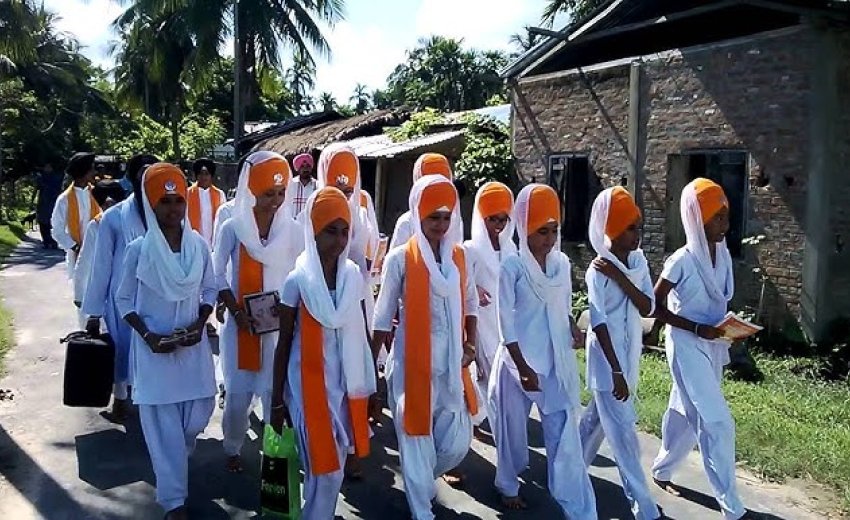Assamese Sikhs, who have never spoken Punjabi, embarked on their maiden journey to Punjab in search of their ancestral heritage in 2009. Their primary destination was the revered Golden Temple. According to PP Singh, a journalist from Assam, many of them experienced their first train ride on this memorable trip.
Despite their unfamiliarity with the Punjabi language, these Assamese Sikhs could read and recite the Guru Granth Sahib because they were well-versed in Gurmukhi, the Punjabi script. While they primarily speak Assamese and adhere to local customs related to food, social etiquette, and attire, they proudly embrace their Sikh identity, as evidenced by their adherence to the five Ks.
About the Assamese Sikhs
In a fascinating turn of events, three Assamese Sikhs—Waryam Singh, Lalit Singh, and Amar Singh—were elected as "Gaon Buddha" or sarpanches in their respective villages in 2009. Waryam Singh, who served as the Sarpanch of Lanka, shared that Sikhs have garnered a strong reputation among the local people in the region.
The roots of this resilient Assamese Sikh community trace back to the early 19th century during the time of the legendary Sikh ruler Maharaja Ranjit Singh. Back then, his ally in Assam, Swargadeo Chandrakanta Simha, was grappling with an armed rebellion, prompted by the intrusion of Burmese militants into the kingdom. Responding swiftly to his friend's distress, Maharaja Ranjit Singh dispatched a contingent of Sikh soldiers under the leadership of Chaitanya Singh to aid in the rescue mission. While some of these Sikh soldiers valiantly fell in a fierce battle against the advancing Burmese troops, those who survived chose to make Assam their permanent home by marrying local Assamese women. This remarkable group of Assamese Sikhs, comprising 185 members, including women and children, hails from the villages of Lanka and Barkola in the Nagaon district of Assam, where a small enclave was established by Sikhs from Punjab around 1820.
Living in Assam
In Assam, the Sikh community, though small in numbers, has a unique story to tell about their origin and cultural integration. According to Ravinder Singh Oberoi, they are a microscopic minority spread across the state, having embraced the local way of life. Despite this integration, they proudly maintain their Sikh identity, marked by their commitment to the faith – all Sikhs are known as "Gurmukhs" and follow the practice of not cutting their hair, with baptism being a requirement for marriage.
They visit the gurdwara regularly and even have names that end with ‘Singh’. However, they hardly use caste or other surnames. Interestingly, they tend to shy away from using caste or other surnames. Chattar Singh, another Assamese Sikh, highlighted that the women in their community often wear traditional Assamese attire rather than the typical Punjabi salwar-kameez. These women brought Assamese musical instruments to Punjab, showcasing their vibrant cultural exchange , performing the Bihu dance of Assam in Amritsar and other parts of Punjab..
Most Assamese Sikhs are engaged in marginal farming with small land holdings, but some have successfully secured government jobs, particularly in the police force. Their gurdwaras house valuable relics, including old cannons and weapons once wielded by soldiers of Maharaja Ranjit Singh, providing a glimpse into their rich history and heritage.
The Sikh community in Assam ,despite being a small community in a region far from their ancestral roots, have shown a deep connection to their Sikh identity and traditions. Their journey to Punjab is a reflection of their commitment to preserving their unique heritage. It is a reminder that culture and identity can transcend geographical boundaries and thrive in diverse corners of the world.
*Based on an article published in Sikhsangat.org on 16th March 2009
